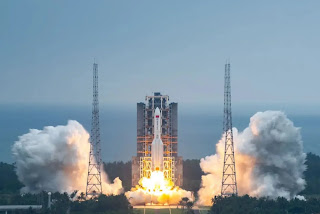China successfully launched the fourth group of satellites for its ambitious Guowang megaconstellation project, further advancing its plans to develop a global satellite internet network.
The launch took place this week from the Jiuquan Satellite Launch Center in northwest China, with a Long March-5B rocket carrying the latest batch of satellites into low Earth orbit (LEO). The mission marks an important milestone in China’s efforts to compete in the rapidly growing space-based internet sector.
What is the Guowang Megaconstellation?
The Guowang (国网) project, also referred to as China’s national satellite internet initiative, is designed to deploy thousands of LEO satellites to provide high-speed, low-latency internet connectivity across China and globally.
The constellation is China’s answer to existing networks such as SpaceX’s Starlink and Amazon’s Project Kuiper — and is a key component of the country’s “New Infrastructure” strategy aimed at accelerating digital transformation.
According to reports, the complete Guowang network is expected to comprise up to 13,000 satellites when fully deployed.
Strategic Significance
"The Guowang constellation is not just about commercial opportunities — it has clear strategic implications," said Dr. Li Wei, an analyst at the China Aerospace Studies Institute. "It will enhance China’s digital economy, support military communications, and reduce reliance on foreign networks."
The project aligns with China’s dual-circulation economic strategy and its goal of achieving technological self-sufficiency in key sectors.
Global Competition in Space-Based Internet
China’s rapid progress with Guowang comes amid a growing global race to dominate satellite internet services. SpaceX’s Starlink has already deployed over 6,000 satellites, while Amazon is preparing to launch its own constellation.
China is aiming to close the gap with frequent launches and state-backed investment. The Guowang system will serve remote and rural regions in China first, before expanding internationally — potentially offering services to Belt and Road Initiative partner countries.
Looking Ahead
With the fourth batch of Guowang satellites now in orbit, testing and integration of the network is ongoing. China plans to ramp up launches over the next 12 months to accelerate deployment.
As space-based internet becomes a cornerstone of global connectivity, the Guowang constellation is positioning China as a formidable player in this next-generation communications race.



.jpg)
.jpeg)
Comments
Post a Comment